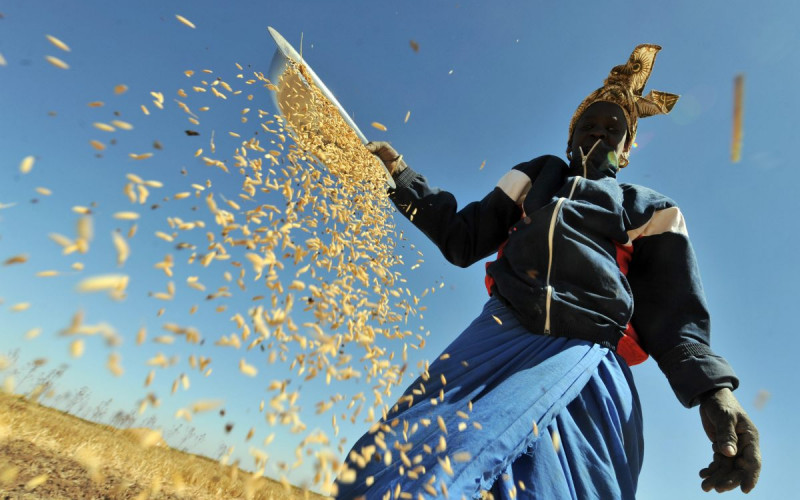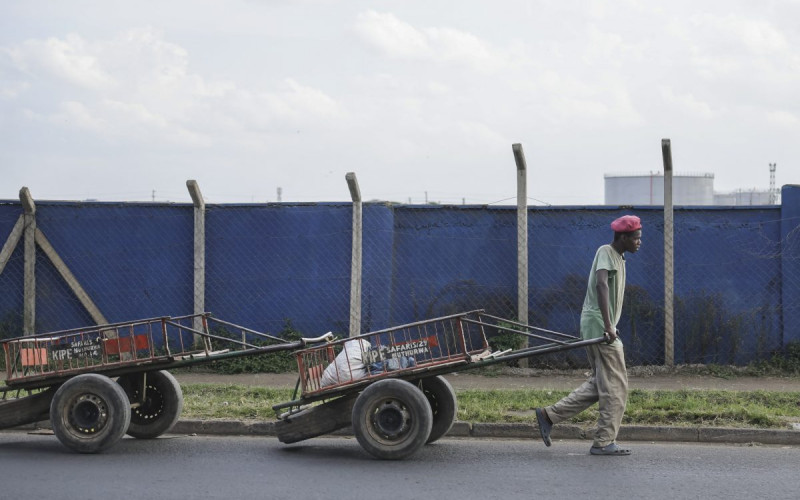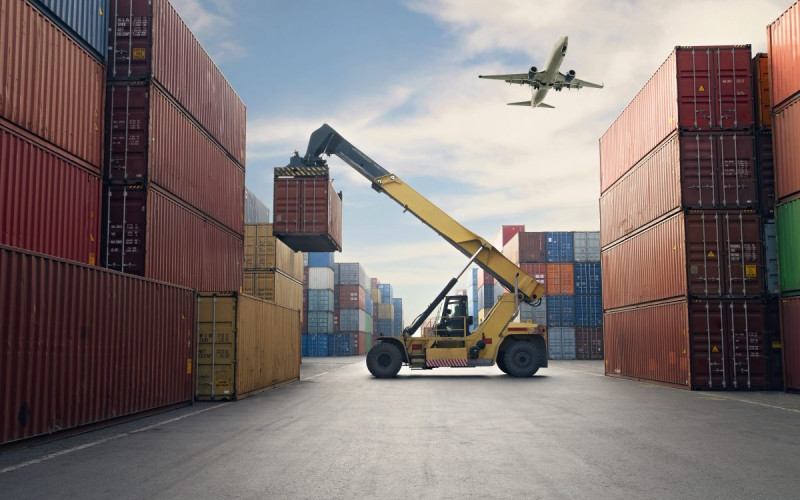Summary:
- Increasing attention is being given to clean technologies at the policy level and in business and trade circles, although the slow pace of decarbonisation throughout the world has prompted some (particularly developed) countries to formulate controversial domestic measures to drive the transition towards clean energy.
- One such measure is the EU’s Carbon Border Adjustment Mechanism (CBAM), a tariff imposed on carbon-intensive goods imported into the EU aimed at ensuring that the imported goods are subject to an equivalent carbon price to that applied to goods produced domestically. By ensuring that imports are subject to an equivalent carbon price, the CBAM aims to prevent ’carbon leakage‘ or the migration of carbon-emitting industries abroad while also inducing countries exporting to the EU to introduce carbon pricing controls in their domestic markets.
- The CBAM, which kicked off in October 2023 with a transitional phase running until January 2027, looks set to have a significantly negative impact both on African exports to the EU and overall gross domestic product on the continent. Least-developed countries in Africa will be the most severely affected.
- Non-EU onlookers have concerns about the CBAM, such as its unilateral nature and lack of alignment with the principle of equity under the global climate regime; its disproportionately negative impact on developing countries; the intended use of the funds it will generate; its excessive influence over countries’ domestic climate policies; and its incompatibility with international trade law.
- There is still a small, critical window of opportunity for the Council of Ministers of the African Continental Free Trade Area to engage with their counterparts in the EU over their concerns and how the application of the CBAM could be less punitive to African countries.
- Among our recommendations are: a slower phase-in period for the CBAM for African countries; different types of exemptions to limit the scope (and thus negative impact) of the CBAM; increased climate finance and technology transfers to African countries; and technical and financial assistance to help African countries achieve their climate commitments.
Executive summary
Many countries and regions are looking to ‘level the playing field’ by introducing measures designed to discourage the manufacture of greenhouse gas (GHG) emissions-intensive products, thereby paving the way for a net-zero future. The EU’s Carbon Border Adjustment Mechanism (CBAM) is the most prominent and recent of these unilateral measures. Effective from October 2023, it involves the imposition of a carbon tariff on imported goods, based on the level of embedded emissions in the goods and the carbon price paid by the manufacturers thereof in the country of origin. The CBAM is likely to have profound implications for African countries, particularly least-developed countries (LDCs). Research suggests that it may reduce continental gross domestic product (GDP) by -0.91% and cause a slump in exports of various products to the EU. In this policy brief, we highlight the operational mechanics of the CBAM and address some of the criticisms that it has attracted, including its lack of equity, its questionable legality from an international law perspective, and whether its proceeds will in fact be used to support climate initiatives abroad. We then examine its implications for African countries and make various recommendations on how the African Continental Free Trade Area (AfCFTA) can use this early transitional phase to negotiate a better deal for African countries, possibly through exemptions and other concessions, technology transfers, and technical and financial assistance. This will help African countries make the transition to cleaner energy while at the same time mitigating the risk of becoming uncompetitive in European markets.
Introduction
Climate, energy and net-zero targets are increasingly being paired with economic and industrial ambitions, as countries look to enhance energy security and jobs, recover from the pandemic and compete in the global race in clean technology manufacturing and raw material processing. Frustrations with the slow pace of global decarbonisation have prompted some countries to take unilateral steps to advance their global ambitions and deliver a competitive advantage in these sectors. Most prominently, the US has formulated the Inflation Reduction Act, which seeks to shore up domestic manufacturing of clean energy products at a scale never seen before.1The Act commits the US to approximately $370 billion in funding for energy security, tax credits for US-made electric vehicle manufacturers and consumer subsidies. Similarly, the EU aims to incentivise the development of clean technologies through its Green Deal Industrial Plan and proposed Net-Zero Industry Act,2 The European Green Deal Industrial Plan was launched in 2019 and aims to achieve climate neutrality in the EU by 2050. It covers a series of policy objectives and initiatives that seek to achieve an initial target, from all economic sectors, of at least a 55% net reduction in GHGs by 2030. The EU Commission subsequently adopted the Green Deal Industrial Plan in February 2023. The Commission will also subsidise green industries in the EU and intends promulgating a Net-Zero Industry Act to underpin industrial manufacturing of key technologies in the EU. This will include industrial capacity goals (production targets) for 2030. as part of a growing trend among countries to provide subsidies for clean energy and supporting bilateral and multilateral trade agreements.3Brian Hensley and Asta Lappetelainen, Kaya Advisory, ‘Race to the Top on Clean Energy: The US and the EU Response to China’s Dominance’ (Inevitable Policy Response, January 25, 2023).
Coupled with their incentivisation of domestic green growth as they work towards a net-zero future, countries and regions are also looking to ‘level the playing field’ through various measures aimed at local manufacturers that produce GHG emissions-intensive products. One of the most prominent of these measures is the EU’s CBAM. The EU plans to reduce emissions by 55% before 2030 and introduce associated reforms in its ‘Fit for 55’ climate policy package. These reforms will entail phasing out the allowances currently given to some high-emitting sectors under the EU’s Emissions Trading Scheme (EU ETS), meaning that these sectors will have to reduce their overall emissions over time.4Under the EU ETS, a declining limit cap is set on emissions from EU industries. Once the cap is reached, these sectors must then acquire, in an ad hoc market, ‘allowances’ (similar to a permit) to emit one tonne of CO2 per allowance. The cap declines over time. Some industries that are deemed very difficult to abate, such as cement, have been given free allowances historically. The implementation of the CBAM is intended to operate alongside the phasing out of the allowances system under the EU ETS between 2024 and 2036. Doing so, however, will heighten the risk of carbon leakage, where EU manufacturers move their carbon-intensive production processes to countries with lower carbon prices or where EU products are replaced by more carbon-intensive imports. To mitigate this risk, the EU intends to impose a tariff on imported goods based on the carbon price in their country of origin. The objective is to equalise the price that emitting EU companies pay for their carbon emissions under the EU ETS with that of imported goods. In this way, non-EU countries will (theoretically) be incentivised to elevate their climate ambitions, as they will need to introduce carbon-pricing instruments to avoid an EU border tariff on imported goods.5European Parliament, “Deal reached on new carbon leakage instrument to raise global climate ambition” (press release, European Parliament, December 13, 2022).
While the CBAM is primarily advocated as a mechanism to level the playing field for the EU’s domestic industry, its loftier goal is to enhance global climate ambitions by encouraging countries to strengthen their domestic decarbonisation policies – in other words, to align their net-zero policies with those of the EU. In this regard, its most powerful feature is that it serves as a negotiation tool that brings heavier emitting trade partners to the decarbonisation table.6Hensley and Lappetelainen, “Race to the Top” However, the CBAM is by no means the only such trade instrument. The US, Japan, Canada and Singapore are also all considering the development of border carbon taxes.
The design of the CBAM is still in the process of being refined. However, it is anticipated that its transitional reporting phase will commence in October 2023, with full implementation taking place in 2026. Early analyses suggest that the CBAM could have a considerable impact in Africa, potentially reducing the continent’s combined GDP and some of its key exporting sectors.7 African Climate Foundation and London School of Economics, Implications for African Countries of a Carbon Border Adjustment Mechanism in the EU, Report (London: ACF and LSE, May 9, 2023). https://africanclimatefoundation.org/wp-content/uploads/2023/05/800756-AFC-Implications-for-Africa-of-a-CBAM-in-the-EU-06A-FINAL.pdf. Analysts are also generally in consensus that the CBAM will negatively affect developing countries more than developed ones.
In this policy brief we discuss what the CBAM is, general concerns about its design and the implications of the measure for African exports. We also recommend ways of crafting an appropriate response.
What is the CBAM?
The CBAM is the product of ‘trilogue negotiations’ between the EU Parliament, Council and Commission. As the measure is currently conceived, importers will need to purchase ‘CBAM certificates’ that reflect the GHG emissions intensity of imported products. Importers will need to register and annually confirm their imports and associated emissions and then surrender an equivalent number of CBAM certificates. This means that exporting countries will have a high procedural burden placed on them to determine the embedded carbon in their products.
The price of the CBAM certificates will correspond with the prevailing allowances given to European emitters under the EU ETS.8The EU ETS programme currently provides free ‘allowances’ to some producers which exempt them from the payment of taxes. Companies with lower emissions that do not need their allowances sell them on the secondary market, which determines the price of carbon. With the CBAM, the intention is to reduce and eventually do away with these allowances, which will increase the price of carbon. If the exporting country has a carbon price (for example, a carbon tax or an emissions trading scheme), the amount of the CBAM allowances that must be surrendered can be reduced. If the exporting country has no carbon price, its exports will be penalised as importers will likely look to shift the associated financial cost to exporting producers or seek alternatives.
The CBAM will have a transitional period, starting on 1 October 2023, during which importers will only need to submit quarterly reports setting out their imports of CBAM products and the emissions ‘embedded’ in such products. This must include both direct emissions and, in the case of all goods except for iron, steel, aluminium and hydrogen, indirect emissions.9In the draft CBAM regulation, direct emissions are those associated with the ‘production processes of the goods’ – in other words, emissions from the production process typically owned or controlled by the producer and located on their premises. Indirect emissions are those arising from ‘the production of electricity consumed in the production processes of goods’ – in other words, emissions embedded in a product relating to the production of the electricity used to make that good. See Council of the European Union, Regulation of the European Parliament and of the Council establishing a carbon border adjustment mechanism, Interinstitutional File 2021/0214(COD) (December 14, 2022), https://data.consilium.europa.eu/doc/document/ST16060-2022-INIT/en/pdf. The transitional period will end in January 2027, after which importers must pay a carbon levy under the CBAM. They will pay this levy by purchasing CBAM certificates covering the emissions ‘embedded’ in imported products. Furthermore, between 2026 and 2034, the allowances currently given to EU emitters under the EU ETS will be phased out. In the initial phase, the CBAM will apply to iron, steel, cement, aluminium, fertilisers, electricity and (through a recent extension to its scope) hydrogen and some downstream products. A decision on whether to include organic chemicals and polymers (which will impact some African exporters) will likely be made during the transition period.
According to the European Commission, the CBAM is anticipated to generate approximately €9.1 billion per year once it is fully up and running in 2030. Initially, the European Parliament proposed that the CBAM’s revenue should be used to support climate change mitigation and adaptation efforts in LDCs. According to the final agreement text underpinning the CBAM from December 2022, the EU is to provide ‘technical assistance’ to developing countries and LDCs for complying with the CBAM, with financial support coming from the EU budget. No specificity is given on how much support will be provided or whether it will be over and above existing support. More recent communication from the EU indicates that some of the revenue generated by the CBAM will be used to repay existing EU debt incurred as part of the COVID recovery package and to fund the EU’s own just transition.10Known as the NextGenerationEU package. Parliament has indicated that revenue from the CBAM will form part of ‘new own resources’ which are to fund repayments on the NextGenerationEU recovery package and to finance its ‘Social Climate Fund’, a fund that seeks to benefit vulnerable households, micro enterprises and transport users in the EU that experience energy and transport poverty. In 2027, the EU intends to conduct a complete review of the CBAM, including an assessment of its impact on LDC exports.
Impact on African exports
The full impact of the CBAM on African exports as a whole is not yet well understood, although studies are under way. The European Commission predicts that the CBAM may reduce exports from African countries from between €5.6 billion and €6 billion in 2030, to €3.9 billion (a drop of about €2.1 billion to $2.29 billion).11European Commission, Proposal for a Regulation of the European Parliament and of the Council Establishing a carbon border adjustment mechanism, COM/2021/564 final (July 14, 2021). A recent report by the African Climate Foundation and the LSE Firoz Lalji Institute indicated that the CBAM may reduce African exports to the EU by -5.7% and continental GDP by -0.91% (equivalent to a $16 billion reduction in GDP at 2021 levels).12African Climate Foundation and LSE, ‘Implications for African Countries.’ The mechanism may also cause a decrease in African exports to the EU of up to 13.9% for aluminium, 8.2% for iron and steel, 3.9% for fertiliser and 3.1% for cement. The modelling used in the study revealed that a number of African LDCs would be among the most affected, notably Gambia and Mozambique. In one scenario, where the CBAM was applied to all imported products, the negative impact on African LDCs’ GDP was forecast to range from moderate (a 1.5% decrease) to extremely negative (an 8.4% decrease).13African Climate Foundation and LSE, ‘Implications for African Countries.’
Concerns about the CBAM
Unsurprisingly, developing countries have argued against the legitimacy of carbon border taxes on the basis that they place an unfair economic and trade burden on countries that have contributed relatively little to climate change, are the most vulnerable to its negative impacts and have fairly ambitious domestic mitigation measures of their own. The sectoral coverage of the CBAM is also of concern. Steel, aluminium and fertilisers are core ingredients in Africa’s development trajectory and essential to the construction and agricultural sectors.14Samuel Pleeck, Fatima Denton and Ian Mitchell, ‘An EU Tax on African Carbon – Assessing the Impact and Ways Forward’ (Center for Global Development, February 10, 2022). Moreover, some of the materials subject to the tax, such as cobalt, steel and aluminium, are required to scale up renewable energy activities.
While it is laudable that countries are being encouraged to pursue less carbon-intensive development pathways, thus preventing them from becoming pollution havens or having stranded assets, the wider economic implications (including the equity of the proposed solution) and the likely effectiveness of the CBAM must also be considered. In a global study of the CBAM’s potential implications for LDCs (with most African countries being LDCs), the UN Conference on Trade and Development (UNCTAD) underscored that LDCs mainly export primary natural resources and are not well integrated into regional markets.15UNCTAD, The Low-Carbon Transition and its Daunting Implications for Structural Transformation: The Least Developed Countries Report (UNCTAD, The Least Developed Countries Report 2022). This makes them more vulnerable to the negative externalities from new environmental policies of major trading partners, as evidenced in the CBAM. UNCTAD found that the spill-over effect for LDCs could be devastating, given the complex trade linkages between LDCs and countries that have not implemented similar climate policies. It warned that CBAM-like policies may exacerbate trade imbalances for LDCs and lead to a ‘race to the bottom’ scenario.16UNCTAD’s The Least Developed Countries Report 2022 demonstrated that LDCs are import-dependent, even in sectors classified as GHG emissions-intensive or ‘dirty’, but they export the raw materials to these sectors.
UNCTAD concluded that the net effect of a CBAM policy would be negative for LDCs, even if they were directly exempted from its application. In a related report, UNCTAD found that with a $44 per-ton carbon tax, developed-country income would rise by $2.5 billion, while developing-country income would fall by $5.9 billion.17UNCTAD, A European Union Carbon Border Adjustment Mechanism: Implications for Developing Countries (2021) Other, similar reports have suggested that the CBAM would widen the gap between developed and developing countries, with respect to both GDP and welfare.18He Xiaobei, Zhai Fan and Ma Jun, The Global Impact of a Carbon Border Adjustment Mechanism: A Quantitative Assessment (The Task Force on Climate, Development and the International Monetary Fund, 2022.
A number of commentators have argued that this effectively results in the mitigation burden of developed countries being unfairly shared across developing countries.19Pleeck, Denton and Mitchell, “An EU Tax.” The equity of this approach is all the more questionable in the context of the Paris Agreement and the UN Framework Convention on Climate Change (UNFCCC), which provide for developed countries to take the lead in emissions reductions and to observe the principle of common but differentiated responsibilities and respective capabilities. Unilateral trade measures such as the CBAM run contrary to these principles and requirements, particularly where the net-zero target years between primary trading partners are misaligned. CBAM measures that operate outside of the strictures of these agreements and their principles, and that fail to account for the unique developmental pathways and circumstances of developing countries, need to make provision for the latter in their design and implementation as well as in the wider negotiations around financial flows.
In this context, it is understandable that at COP27 in 2022, South Africa, together with other BRICS countries,20India, Brazil, Russia and China. criticised the use of ‘unilateral measures and discriminatory practices, such as carbon border taxes, that could result in market distortion and aggravate the trust deficit amongst Parties’.21South African Government, Department of Forestry, Fisheries and the Environment, “Basic Ministerial Joint Statement at the UNFCCC’s Sharm El Sheikh Climate Change Conference COP27/CMP17/CMA4”, November 15, 2022. They also called upon developing countries to mobilise a united response to the unfair shifting of the burden of responsibility from developed to developing countries.
The CBAM has also been criticised for dictating a policy response in other countries that fails to account for other regulatory or market-based mitigation approaches. For instance, instead of a pricing instrument such as a tax or ETS, countries may want to introduce GHG emission regulatory caps with associated criminal (instead of financial) sanctions or non-punitive financial incentives, such as subsidies and tax exemptions, for low-carbon technologies. Moreover, many African countries do not have a formal carbon-pricing mechanism, such as an ETS or carbon tax,22Climate Legal, Carbon Pricing in Sub-Saharan Africa (Konrad-Adenauer-Stiftung e. V., February 2020). and its introduction would not be without challenges. While carbon pricing has numerous advantages because it can generate additional revenue for national governments and can have environmental co-benefits, it can be administratively burdensome and difficult to implement in the agricultural, land use and forestry sectors (which is often the case in African countries) and can have a high risk of regressive impacts. It can also be tax inefficient.23Climate Legal, Appropriate Carbon Pricing in Least Developed Countries and Emerging Economies: Dialogue Outcomes Report (Konrad-Adenauer-Stiftung e. V., May 18, 2022).
Furthermore, many have questioned whether it will be possible to implement the CBAM in a manner that is consistent with World Trade Organization (WTO) rules relating to nondiscrimination. Under the WTO’s principle of non-discrimination, member countries may not discriminate (i) between ‘like’ products from different trading partners, thus giving them ‘most-favoured-nation’ status (Article I of the General Agreement on Tariffs and Trade [GATT]), and (ii) between its own products and ‘like’ foreign products, thus giving them ‘national treatment’ (Article III of the GATT). In terms of the most-favoured-nation rule, beneficial treatment granted to the imports of one WTO member must be granted to all other WTO members.
It could be argued that the CBAM discriminates against like products from different WTO members on the basis of the carbon intensity of each product.24The WTO has no definition of like products. However, historically, the WTO has deemed products to be ‘like’ each other if they have a competitive economic relationship in the marketplace. Thus, steel from two different countries would be ‘like’ products, even though they have a different carbon footprint in their manufacturing process. Similarly, the CBAM could deviate from the ‘like’ products rule if it used the climate and environmental regulations of another country as grounds for determining which imports require the purchase of emissions certificates.25James Bacchus, ‘Legal Issues with the European Carbon Border Adjustment Mechanism’ (Briefing Paper no. 125, Cato Institute,August 9, 2021). The national treatment rule requires that imported products be treated as favourably as products produced domestically. This rule could be contravened if, implementation, any free allowances under the EU ETS are not fully phased out as the CBAM is phased in, giving a double benefit to EU products.
If it is established that either one of these rules has been contravened, the EU could argue that the CBAM qualifies under the exemptions in Article XX (a)(b) and (g) of the GATT relating to public morals, necessary measures to protect human, animal or plant life, and the conservation of natural resources, respectively. To succeed, the EU must prove that its application does not constitute unjustifiable discrimination against countries in which the same conditions prevail or a disguised restriction on international trade, and that a less restrictive measure could not be used. There is room to argue that these exemptions do not apply because, for example, the cost of emissions certificates will be based on those in the ETS. This means that they will reflect EU-specific supply and demand conditions and will thus be discriminatory. Moreover, the WTO Appellate Body has been critical of measures that have both intended and actual coercive effects on the specific policy decisions made by foreign governments.26WTO, “United States: Import Prohibition of Certain Shrimp and Shrimp Products – Report of the Appellate Body”, WT/DS58/AB/R (Geneva: WTO, November 26, 2001).
It is difficult to speculate about the success of any of these defences at this early stage, particularly as the WTO Appellate Body has followed a chequered approach to tackling environmentally related trade disputes and the CBAM’s design is not yet final.
Modifying the CBAM’s design to suit African countries
Assuming that the CBAM is not set aside on legal grounds, the clearest and most beneficial modification would be to make an exception, or introduce a longer phase-in period, for African countries. However, if this was unsuccessful, amendments to the CBAM’s detailed design could still ameliorate its impact considerably.
First, the inclusion of indirect emissions increases the total volume of emissions subject to the CBAM and, in turn, the cost. It also increases the administrative complexity of reporting, as it requires reporting on emissions outside the direct control of the emitter. In some African countries, this information may not exist or may not be easily accessible to exporters. Accordingly, it would be in the interests of exporting countries in Africa to argue for the CBAM’s scope to be limited to direct emissions only. Second, it would be important to motivate against the inclusion of organic chemicals and polymers during the transitional phase, thereby reducing the scope of the covered products. Third, given the lack of any legitimate climate purpose being served by rechannelling the revenue into repaying existing EU COVID debt, and given the stated purpose of the CBAM as a climate changerelated measure, African governments should be conducting their own assessments on the impact of the CBAM on their exports. They should also be arguing for more definitive commitments around financial support in addition to the other concessions proposed in this analysis. At a minimum, CBAM revenues should be rechannelled to those LDCs impacted by the CBAM.
Conclusion and recommendations
Notwithstanding its challenges, CBAM entered into the transitional phase in October 2023. The development of carbon-related border tariffs in other jurisdictions in the coming years is likely. The AfCFTA is a powerful mechanism that can advance Africa’s demands for how the CBAM is implemented, particularly given the EU’s hopes for a continent-to-continent free trade agreement in the longer term. Accordingly, it is important for African countries to continue engaging with the EU on the final design of the CBAM during its transitional period, while also preparing for a future in which trade is increasingly used to achieve net-zero targets and national mitigation objectives. In that context, we recommend the following:
- As the design of the CBAM is yet to be finalised and formally adopted, and as there will also be a transitional period until 2026 when the sectoral scope will be deliberated, it is critical that African countries share their insights on the implications of the CBAM for their economies, and make counter recommendations. To this end, we suggest that the AfCFTA’s Council of Ministers engage with its counterparts in the EU, calling for firm measures that take into account the dependency of some trade partners on the EU and offer appropriate and precise remedies and timeframes. Such measures could include:
- the exemption of African countries from the CBAM altogether, or the introduction of a slower phase-in period for the CBAM, or the introduction of sector-specific (aluminium, iron and steel) exemptions for African countries, according to a progressive time schedule;
- the exclusion of indirect emissions from the CBAM;
- the exclusion of chemicals and polymers from the sectoral scope;
- a commitment from the EU to monitor impacts on African trading partners on an ongoing basis and to adapt the CBAM design in response to such impacts;
- an assessment of the negative impacts (in terms of equity) of the CBAM on African countries, sectors and livelihoods and the additional finance needed to mitigate such impacts; and
- the provision of research and technical assistance on the type and design of carbon-pricing instruments for African jurisdictions, with related financial support.
- The EU should expedite climate finance and technology transfer to African countries (both LDCs and economies pursuing just transitions) by committing an amount equivalent to at least the proceeds from the CBAM (estimated at approximately €9.1 billion per year) and by significantly enhancing their financial support for the AU’s Green Recovery Action Plan and the measures proposed in the EU’s Global Gateway programme in Africa.
- African countries should foster measures within the AfCFTA that build low-carbon and resilient value chains by, for example:
- excluding environmental goods and services from regional economic community (REC) tariff liberalisation schedule exemptions (with AfCFTA guidance); and
- promoting measures that support renewable energy and carbon-neutral or negative technologies in forthcoming protocols on investment, intellectual property, competition and digital trade.
- Economic Partnership Agreements between the EU and other developed countries and the RECs (and/or the AU) should be introduced that address and bring together the mechanisms identified above so as to enable the transition to cleaner technologies in selected regional value chains.
- AU members should be encouraged to pursue national policy, legal and institutional reforms to harmonise climate commitments, development planning and trade policy with global and African green growth strategies. These efforts should include the incorporation of climate change targets and mitigation measures that align with a country’s Nationally Determined Contribution and dedicated trade measures that support climate action within the AfCFTA’s implementation plans.27For example, classifying climate goods and services, labelling and certification schemes, and exempting climate measures from being considered as non-tariff barriers. See Thomas Hale and Kennedy Mbeva, “Towards a Green Trade Strategy for Africa”, Blavatnik School of Government, University of Oxford, June 13, 2022.
- Ongoing studies should be conducted to determine the impacts of the CBAM on exports, the ability of countries to absorb such impacts – if at all and over what time periods – and the extent to which net-zero strategies between African countries and the EU are misaligned.
- To date, trade has not featured broadly in negotiations under the UNFCCC and Paris Agreement. If trade measures are to be used in an effort to compel developing countries to align their net-zero strategies, wider discussions are needed on climate finance and financial flows under these agreements. In this regard, African negotiators need to formulate their positions on and approaches to climate finance if they are to make trade one of the central pillars of negotiations on net-zero targets, equity and finance.







